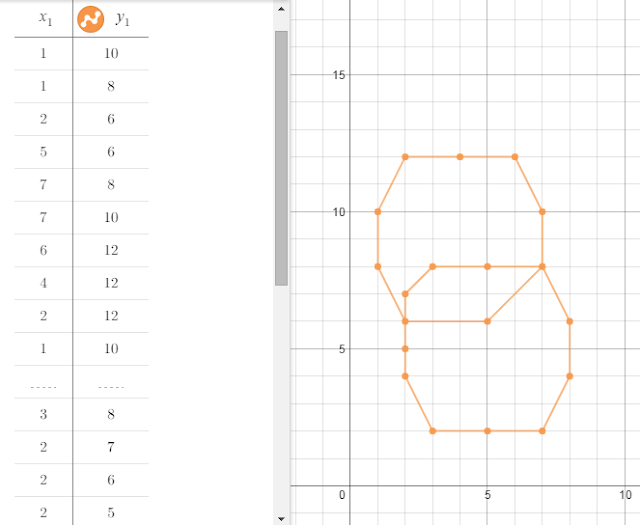I've already blogged about equivalence. But there's a philosophical discussion children could have here.
What does it mean when we say things are the same?
Heraclitus famously said, "You can't step into the same river twice." The water, of course, has changed.
This statement, I think, could be a great starting point, stimulus, for discussion. Peter Worley suggests the line could be taken away from Heraclitus and given to Tina, talking to her brother Timmy, while they're visiting a river.
There does seem to be a lot to think about here, and it relates to the idea of equality in maths.
Peter James Jackson in one of his wonderful videos wants us to say = as "is equivalent to".
Why? Maybe to emphasise the idea of the balanced equations, rather than, as with the = button on the calculator, "gives the answer..." This is good, but I'd like to get equals to be associated with balanced equations too.
Maybe too, to stress that the two are different but the same. But then I'd say that equality has the idea of difference in it.
Parmenides famously "answered" Heraclitus by saying, "You can't step into the same river once."
For a long time I thought he was just being ridiculous. Well, he was in a way, but within that craziness, there is, for me now anyway, a serious kernel.
Whenever we call two things the same, they are also different in some way. They're maybe in a different place, or a different time. They may be in a different form.
For instance, if we say that two celebrities arrived at an event in the same dress, we never mean that they've both squeezed into the one dress. They are wearing two separate dresses in all-too-slightly different places, with all kinds of subtle differences, definitely taking different shapes, possibly different sizes.
So same never means "completely the same". That's what Parmenides is saying: you have to have two (at least) different things to have sameness. Those things will be the same in some important way, but will be different in others.
Now I wouldn't say all this with my class, of course. Or even lead towards any of it particularly. But I know it's there, a linguistic and thought territory to be explored, every bit as "out there" as the little forest behind the houses across the road from school where children come back with all sorts of insects I can't immediately identify.
I think it would be good to have the philosophical discussion and the maths discussion about equality at roughly the same time, preferably near the beginning of year. I'm looking forward to hearing what my new class have to say!
What does it mean when we say things are the same?
Heraclitus famously said, "You can't step into the same river twice." The water, of course, has changed.
This statement, I think, could be a great starting point, stimulus, for discussion. Peter Worley suggests the line could be taken away from Heraclitus and given to Tina, talking to her brother Timmy, while they're visiting a river.
There does seem to be a lot to think about here, and it relates to the idea of equality in maths.
Peter James Jackson in one of his wonderful videos wants us to say = as "is equivalent to".
Why? Maybe to emphasise the idea of the balanced equations, rather than, as with the = button on the calculator, "gives the answer..." This is good, but I'd like to get equals to be associated with balanced equations too.
Maybe too, to stress that the two are different but the same. But then I'd say that equality has the idea of difference in it.
Parmenides famously "answered" Heraclitus by saying, "You can't step into the same river once."
For a long time I thought he was just being ridiculous. Well, he was in a way, but within that craziness, there is, for me now anyway, a serious kernel.
Whenever we call two things the same, they are also different in some way. They're maybe in a different place, or a different time. They may be in a different form.
For instance, if we say that two celebrities arrived at an event in the same dress, we never mean that they've both squeezed into the one dress. They are wearing two separate dresses in all-too-slightly different places, with all kinds of subtle differences, definitely taking different shapes, possibly different sizes.
So same never means "completely the same". That's what Parmenides is saying: you have to have two (at least) different things to have sameness. Those things will be the same in some important way, but will be different in others.
Now I wouldn't say all this with my class, of course. Or even lead towards any of it particularly. But I know it's there, a linguistic and thought territory to be explored, every bit as "out there" as the little forest behind the houses across the road from school where children come back with all sorts of insects I can't immediately identify.
I think it would be good to have the philosophical discussion and the maths discussion about equality at roughly the same time, preferably near the beginning of year. I'm looking forward to hearing what my new class have to say!




























